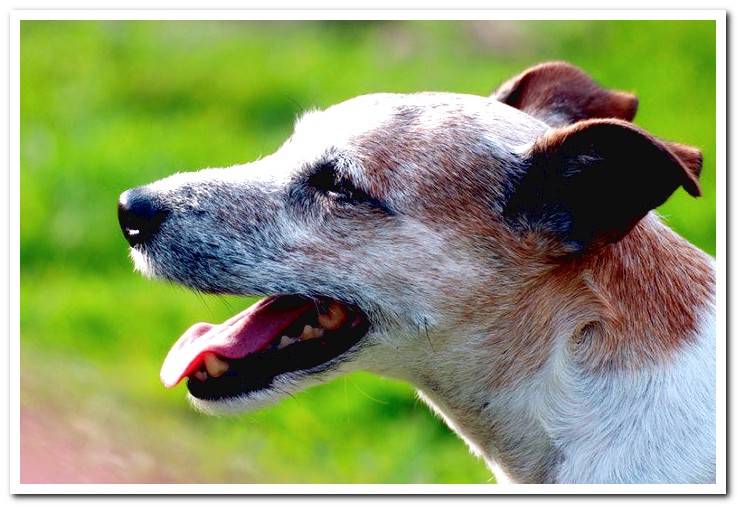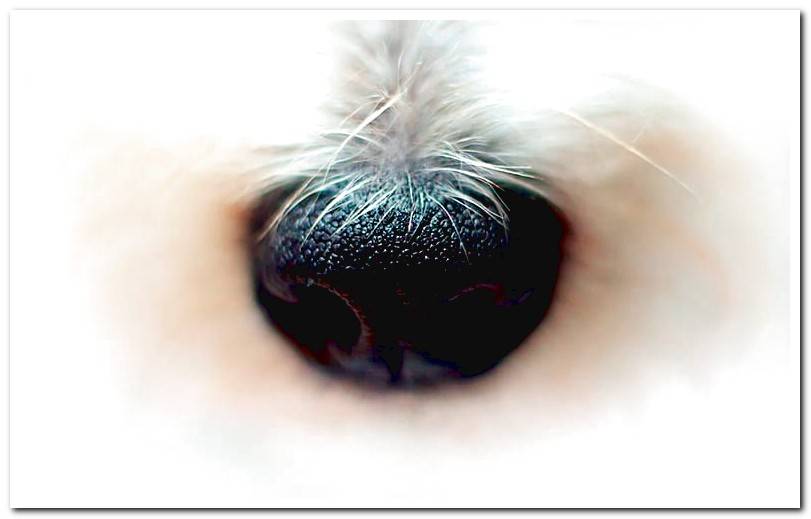
Lupus is an autoimmune disease, which means that it occurs because the dog’s immune system attacks the body itself. As it does not always happen in the same way, we find two presentations of the disease.
In this article we will describe the symptoms of lupus, as well as the characteristics of the forms that this pathology can manifest in dogs. It is also very important to know that there is treatment.
Index of contents
- 1 What is lupus?
- 2 What causes lupus in a dog?
- 3 Lupus symptoms in a dog
- 4 Discoid or cutaneous lupus erythematosus
- 5 Systemic lupus erythematosus
- 6 Canine lupus be cured?
What is lupus?
Lupus is a disease of autoimmune origin that is due to the deposition of the so-called immune complexes in the epidermis, which is the superficial layer of the skin, or in different organs.
Immune complexes are compounds formed by the binding of antibodies, which are proteins whose function is recognize pathogens, and antigens, which is the name given to substances outside the body that trigger the immune response.
Therefore, these complexes are part of the normal reaction of the immune system, but when they accumulate, as in the case of lupus, they cause the disease. They cause cellular and vascular injuries wherever they are deposited.

What causes lupus in a dog?
Predisposing factors are ultraviolet rays, some vaccines made with live modified viruses and genetic causes, but the exact stimulus that causes the reaction in the immune system is unknown. Therefore, neither we can take preventive measures.
It is considered that there are some breeds with a greater predisposition to suffer from this disease. The Collie, the German shepherd or the husky suffer more frequently from discoid lupus erythematosus.
Lupus symptoms in a dog
The clinical picture that a dog suffering from lupus will develop will depend on whether it suffers from the systemic or cutaneous presentation of the pathology. In any case, the appearance of signs such as the following should make us seek veterinary attention:
- Injuries such as wounds and scabs on the face, pinnae, legs or genitalia. The location varies depending on whether it is systemic or discoid lupus.
- Thickened pads that can ulcerate and even come off.
- Itchiness
- Pain.
- Polyarthritis, that is, painful inflammation in various joints that we can see as a limp that changes the joint.
- Fever intermittent.
- Glomerulonephritis, which is a disease that affects the glomeruli, the filtering units of the kidneys.
- Anemia.
- Ulcerative stomatitis from which ulcers occur in the mouth.
- Paronychia, an infection in the skin surrounding the nails.
- Onychomadesis, which is the fall of the nails.

Discoid or cutaneous lupus erythematosus
It is a benign and quite common form of lupus that will only affect the skin, specifically that of the face. It usually begins with a small lesion on the nose / truffle where the skin has lost its coloration or, on the contrary, is reddened. This first injury progresses to form wounds and, on drying, scabs.
We can see that the injuries get worse when the dog gets sunlight. Taking into account all these data the vet can make the diagnosis of lupus, since the location of the injuries constitutes a good clue. Treatment includes oral and topical administration of corticosteroids, vitamins, immunosuppressants, and antibiotics.
Systemic lupus erythematosus
In this presentation, the autoimmune disorder is multisystemic, that is, it will affect different organs. So its clinical picture can be very different in each dog, which makes it difficult and can delay its diagnosis. In some cases, however, symptoms point to lupus, which will be confirmed by laboratory studies.
They are usually damaged, in addition to the skin, kidneys, heart and joints. Lameness or a strange gait appears numerous times as the first symptom. The vet will request blood and urine tests and the determination of antinuclear antibodies (ANA), which are those that confirm the existence of an autoimmune disease.
ANA are produced when the immune system is not able to distinguish well between its own and external elements, precisely what happens in lupus. For treatment the vet will prescribe systemic immunosuppressants in an attempt to slow down the reaction of the immune system.
Canine lupus be cured?
This disease, as we have seen, is treated, but the prognosis will depend on the type of lupus that the dog presents. In the case of the systemic it will be reserved, especially in the long term. Instead, the discoid can usually be treated successfully.
Keep in mind that the treatment of the disease can be for life. Usually, high doses of drugs are used initially. These will gradually decrease until they find the minimum possible to maintain the dog with a good quality of life but with the fewest side effects.
In addition, we will prevent the dog from licking topical drugs, if applicable, and we must protect it from the sun. For this we can use topical products that the vet will recommend. Contact with ultraviolet light considerably worsens the clinical picture.
